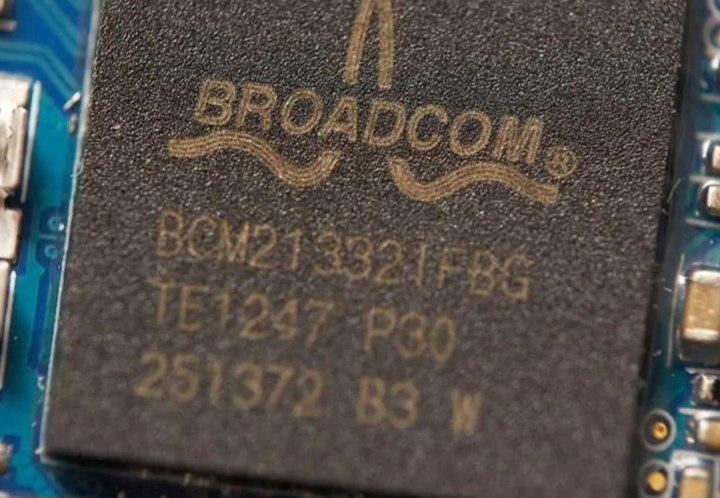The Rise of Broadcom and the Fall of Intel
Advertisements
In the world of technology, there are times that feel like a double-edged sword—some shrouded in failures, while others bask in monumental successes. As we delve into the past year, one might say it was both an exhilarating ride and a cautionary tale for major players in the semiconductor industry.
The semiconductor sector stands as a testament to this dichotomy, where fortunes can change with astonishing speed. Over the last year, we witnessed massive gains and ionoubtedly catastrophic failures, reflecting the highs and lows that characterize this intensely competitive landscape.
Despite the hurdles, there’s no denying that some companies have thrived against the backdrop of market shifts. For instance, among those 10 publicly traded companies whose valuation surpassed the monumental $1 trillion mark, a staggering one-third emerged from the semiconductor realm, showcasing the sector’s resilience and significance.
As we step into 2024, it's intriguing to observe certain titans, like Broadcom, joining the ranks of industry giants TSMC and NVIDIA. This shift signals not just a revival but a revaluation of sections long thought to be stagnant, compelling the tech world to pay attention once more.
Jensen Huang, co-founder of NVIDIA, emerged as a relentless advocate for artificial intelligence—traveling across the globe to push the boundaries of AI usage, thereby reaping astonishing growth for his organization.
While debates regarding the reality of AI versus mere hype linger on, it’s becoming clear that companies producing the fundamental components of this technology are destined for success.
What’s fascinating is that three firms, which once occupied niche spaces within their respective sectors, collectively surged to a combined valuation exceeding $5 trillion. To put this in perspective, such an amount eclipses the entire GDP of Japan. This seemed to be a narrative of triumph.
Yet, overshadowing this success story were two established semiconductor manufacturers that faced contrasting fates, leading them to a significant downturn.
The semiconductor landscape is notoriously unforgiving—designing, launching, and mass-producing these minuscule components often demands billions in investment and several years of labor. Furthermore, to achieve mass production, corporations are required to invest over $20 billion in the construction and equipping of fabrication plants that are unfortunately rendered obsolete in just a handful of years.
This economic backdrop makes the semiconductor industry a high-stakes game, compounded by complexities that increasingly limit participation to fewer and fewer players.
The companies that have adeptly navigated this turbulent environment are undoubtedly Intel and Samsung Electronics. For decades, both firms have thrived through a straightforward strategy: make substantial investments—even during periods of waning demand—and introduce new technologies faster than competitors, enabling them to benefit significantly when the customer demand revives.

However, as we approached 2024, Samsung faced a strategic upheaval in its chip division, while previously struggling SK Hynix outperformed it in both growth and market share by ramping up production of memory crucial for AI computing systems. In the foundry sector—where companies manufacture chips for others—Samsung lagged far behind TSMC. Though there’s still an opportunity for Samsung to correct its course by delivering enough AI-related memory, the confidence in its erstwhile irrefutable dominance has undoubtedly diminished.
In sharp contrast to Korea’s challenges, Intel found itself embroiled in turmoil. Just a couple of years ago, Intel's annual revenue was nearly triple that of NVIDIA’s. But by 2024, sales from NVIDIA's data center segment alone will surpass Intel’s total revenue by more than twofold. Samsung's immediate goal is to ramp up mass production of high-bandwidth memory, while Intel is caught in a dilemma. NVIDIA has invaded its data center chip stronghold, TSMC holds the manufacturing crown, AMD is eroding its microprocessor dominance, and Broadcom profits from aiding Intel's largest clients in designing their chips.
In December of last year, Intel's board grew impatient with Pat Gelsinger, whom they had brought back to save the struggling company. The interim co-CEO acknowledged during a tech conference that decisions regarding whether to split the company or segment its largest chip manufacturer will fall to their successors. If 2024 proves difficult for industry pioneers, 2025 might usher in a reality where the Intel name is forgotten.
The past decade has witnessed the rise of notable tech giants, often earning catchy monikers that resonated in the market. In recent times, with Broadcom surging ahead, the markets seem to have coined a new acronym: BATMMAAN!
The eight companies represented in BATMMAAN, arranged alphabetically, comprise: Broadcom, Apple, Tesla, Microsoft, Meta, Amazon, Alphabet, and NVIDIA.
Clearly, investors familiar with the MAG 7—another popular tech index—can observe that BATMMAAN simply adds Broadcom to the mix, reshuffling the narrative slightly.
While many Chinese investors may associate the initial letters of BATMMAAN with the well-known BAT (Baidu, Alibaba, and Tencent), it’s essential to clarify that there is no direct connection. The alphabetical alignment of the eight companies is an intentional play on the name Batman.
In fact, last year, while Tesla was struggling, there were discussions on Wall Street about whether it should be ousted from the roster. This year, however, with Tesla performing exceedingly well and Broadcom achieving remarkable end-of-year momentum, it seems more prudent to embrace an “eight giants” nomenclature.
Broadcom’s current stature indeed places it at the table with these illustrious behemoths, ready to compete in the ever-evolving technological landscape.